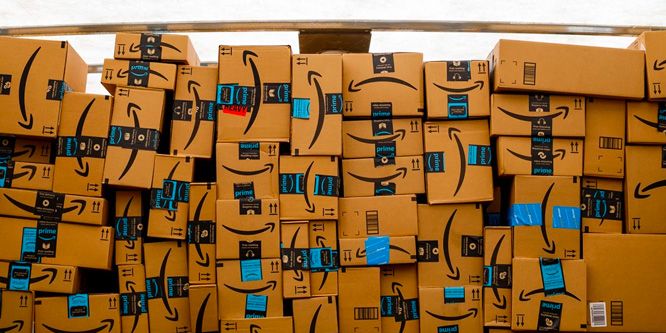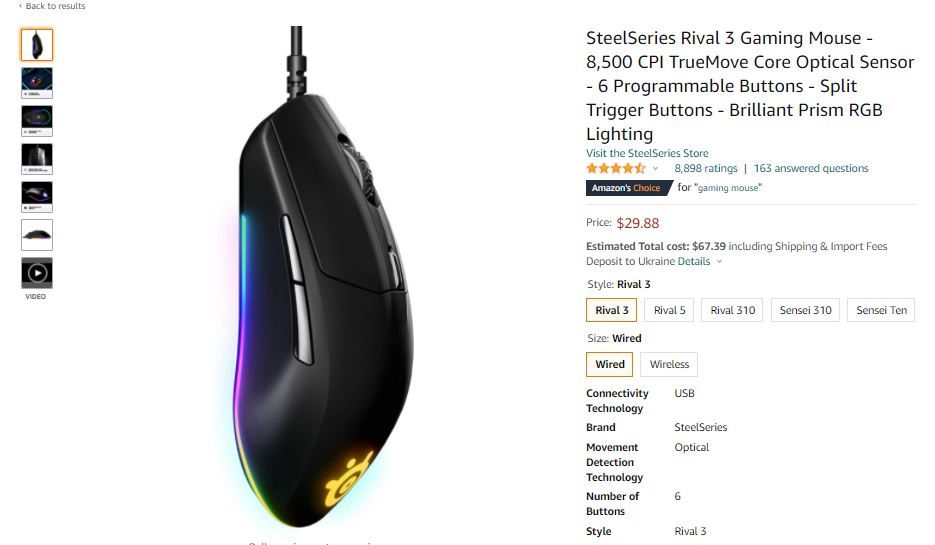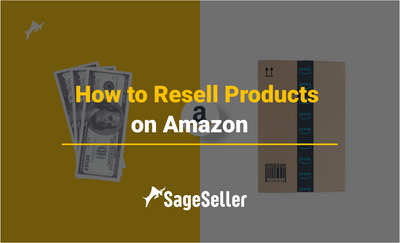Aloha, Amazon Seller!
Do you want to learn more about reselling on Amazon? How to resell products on Amazon? How to become a reseller? Follow our guide and know more about Amazon resellers.
Amazon.com is a platform where creative sellers are applying a lot of different sales models to sell their goods for profit. Depending on your product, niche, and marketing strategy you can select and successfully implement any of those to grow your business and make money.
Reselling is one of those popular business models allowing you to organize sales of your product pretty easily and a lot of sellers use it to get started on the marketplace.
In this post, we will discuss how to resell products on Amazon and how to set up your Amazon reselling business efficiently.
What Is an Amazon Reseller?
Amazon resellers are individuals or companies that source products at a low price and then resell them on Amazon. Very often this happens when the products are bought in large consignments thus have a low initial price from the manufacturer or a distributor.
The models for reselling are as follows:
Retail Arbitrage
Retail arbitrage is a sales model when the seller buys discounted products through retailers (including online retailers) to sell on Amazon.
Wholesale
Selling wholesale on Amazon refers to buying products in bulk directly from the manufacturer or supplier at a discounted price and afterward selling them on Amazon for a retail price.
Dropshipping
Dropshipping Amazon is a sales model when the seller (the dropshipper) lists an item on his website, gets an order from the shopper, and asks the manufacturer to send it to the buyer directly. Amazon dropship profit margin comes from the difference between the wholesale price of the manufacturer and your retail e-commerce price.
Private Label
A Private label is a sales model when the seller finds a product potentially in demand and creates its own brand out of it. With this model, you can enroll in an Amazon reseller program called Amazon Brand Registry to increase your sales.

What is the example of reselling?
For example, stickers. Resell stickers on Amazon is a good beginning for small business owners. Stickers are cheap and easy to sell. You can buy a bulk of in-stock stickers directly from sticker manufacturers or suppliers at a lower price and afterward sell them on Amazon for a higher price.
For example, if you are a designer and want to create your own private brand, reselling custom stickers will be perfect for you. You can make your design work into die-cut stickers on Customsticker.com and resell them on Amazon. Or you can join the dropshipping on Amazon and list your sticker design items on your website. After you get orders, you can design the work on platforms like Customsticker.com and ask them to send it to the buyer directly. In this case, Customsticker.com provides good quality products, fast free shipping, and no minimum.

Is Reselling on Amazon Legal?
Yes, it is absolutely legal. Your business is to resell Amazon products from a manufacturer or distributor, often under your own private label brand. However, you must ensure that the products are not copyright and trademark infringing.
You also need to ensure that the products you want to resell are not subjected to counterfeiting or IP infringement.
On top of that, you need to ensure that the products are not falling into restricted categories on Amazon. If you’re selling restricted products on Amazon, they may suspend your account. Amazon FBA restrictions mean, that sellers need to get approval before they can sell products in certain categories. This is important to remember because the restrictions vary depending on the marketplace and national laws, the lists of restricted categories and products differ. Whatever is not restricted on Alibaba may be a restricted category on Amazon.
How to Become a Reseller for Amazon?
To start buying and selling on Amazon as a reseller you need to follow certain steps, which we’re going to describe below.
Step 1. Register an Amazon Seller Account
To start selling on Amazon, you’ll need to register your Amazon seller account. Here you can find a detailed guide on how to register an Amazon seller account.
On Amazon, you can register either an Individual account or a professional account. With a Professional account, you pay $39.99 per month, while with an Individual account you’ll pay a $0.99 fee per sale, meaning that if you make over 40 sales a month, a Professional account saves you money. On top of this, Amazon offers advanced seller tools to Professional account owners, including order reports, Buy Box eligibility, inventory tools, etc.
Step 2. Find a Perfect Product for Reselling on Amazon
To start with, it is a good idea to get product samples from the manufacturer, test them and see if this is what you expect in terms of quality and functionality. The reason for this is that if you find a product, for instance, on eBay or Alibaba, the picture could essentially differ from what the item really looks like.
7 Tips to find a perfect product to resell on Amazon
- Avoid items with the extremely high competition;
- Select product with good margin;
- Avoid oversized, bulk, fragile, or too heavy items;
- Avoid extremely seasonal items;
- Avoid complex to manufacture, difficult to assemble, licensed, or restricted category products;
- Check if the product sells in the selected marketplace;
- Check financial parameters, see how much your product price is justified.
A complete guide on how to select a product to sell on Amazon you can find here.
Where to Find Reselling Amazon Products?
The source for great ideas of products to resell on Amazon could be a best-seller or trending lists, for instance, those from Alibaba or eBay. Also, you can perform a search through the customer reviews on e-commerce websites, seller, and consumer forums. Consider the products rising in popularity.
Another approach is to do keyword research and analyze popular keywords. They can give you a hint about which category to target.
Also, look at the competition and product demand. Market analysis is a good tool to catch a trend.
Step 3. Source the Product from the Supplier
The ideal supplier for your Amazon reselling products should be able to provide quality products and meet your deadlines. Check if the supplier is ready to provide small amounts.
4 tips on what to look at to find a good supplier for reselling on Amazon
- Test your supplier’s performance;
- Find a reputable manufacturer;
- Ask questions about the product and production;
- Make sure the supplier guarantees quality and observes delivery deadlines.
How to Find Suppliers for Amazon?
There are several options for how to find suppliers for Amazon. You can do a search on Alibaba, this is a good place to find a supplier of items with a good profit margin. You can also consider working with sourcing agents or performing a search in the wholesale directories. One more source is US Import Database.
For the US, you can also try and look for your supplier in the below list:
- Dollardays.com;
- Liquidation.com;
- Big Lots;
- Gabes;
- Tuesday Morning;
- Price Master;
- World Wide Brands;
- SaleHoo;
- Lotus Light.
Step 4. Create an Optimized Listing
If the product you want to sell does not exist on Amazon, first and foremost, it is important to create an optimized listing. Even if you have the best product in the world, if your product listing is an unclear mess with poor pictures, shoppers will not be interested to buy it.
An optimized listing should contain:
- High-quality images / video;
- Highly-ranked keywords;
- Clear product descriptions and informational bullets;
- A+ content;
- 20 to 30 reviews with at least a 4-star rating.
If a product you want to sell already exists on Amazon, you should match it to the existing listing.

Step 5. Launch and Promote Your Product
To promote your product efficiently, you need to have a marketing strategy.
An efficient marketing strategy should include the following elements:
- Target increasing visibility on Amazon;
- Monitoring of your ad campaign metrics; track reach, engagement, impressions, clicks, CTR, CPA, CPM, and ad frequency;
- Analysis of your Sponsored product promotions efficiency;
- Setting up and reviewing your ad campaigns;
- Target attaining Buy Box;
- Monitoring of your ACoS;
- Implementing all ways of driving conversions: request customers for reviews, remove negative reviews;
- Promoting of products outside Amazon;
- Engaging influencers.
Step 6. Grow Your Business
Perfect listings, advertisements, customer reviews – all of these tools are generating conversions, but the money you earned can be immediately burned down if you don’t track your expenses and other business metrics. To avoid this, you need to track your product KPIs and analytics. Amazon analytics for sellers helps you not only know your sales numbers, but also your real profit figures, and a lot of other data, that can increase or reduce it. Accurate profit analytics will show you all details about your Amazon transactions, each SKU, ad and organic sales, and other vital business metrics.
Keeping track of all this is not easy, but fortunately, you have Amazon business analytics tools for this purpose. This is an efficient and easy way to maximizing your profits.
Here are the metrics you need to look after:
- Key metrics influencing your Amazon profit;
- Organic and advertising Amazon sales figures separately, also per order and unit;
- ACoS;
- Net profit;
- Amazon Fees, including ‘hidden fees’, also per order and period;
- Changes in your expenses on items, including advertising costs and the cost of goods;
- Changes of your order fees including fees, charges, and taxes paid in connection with the sale, storage, packaging, and delivery of the item;
- Fees burning your Amazon profit;
- Refunds and reimbursements.







